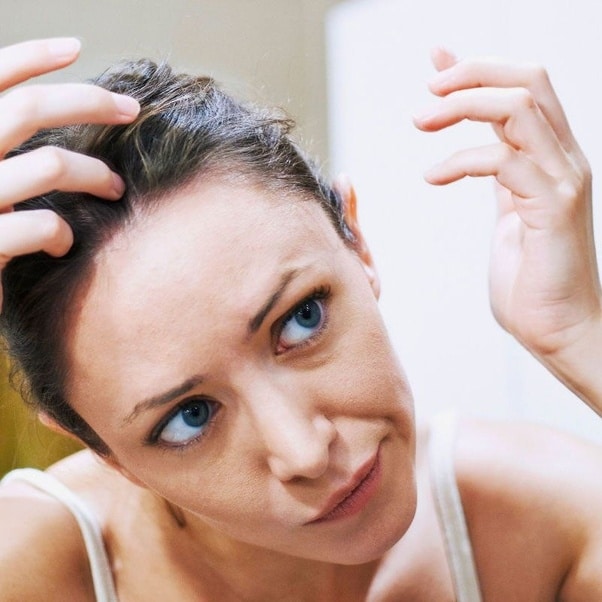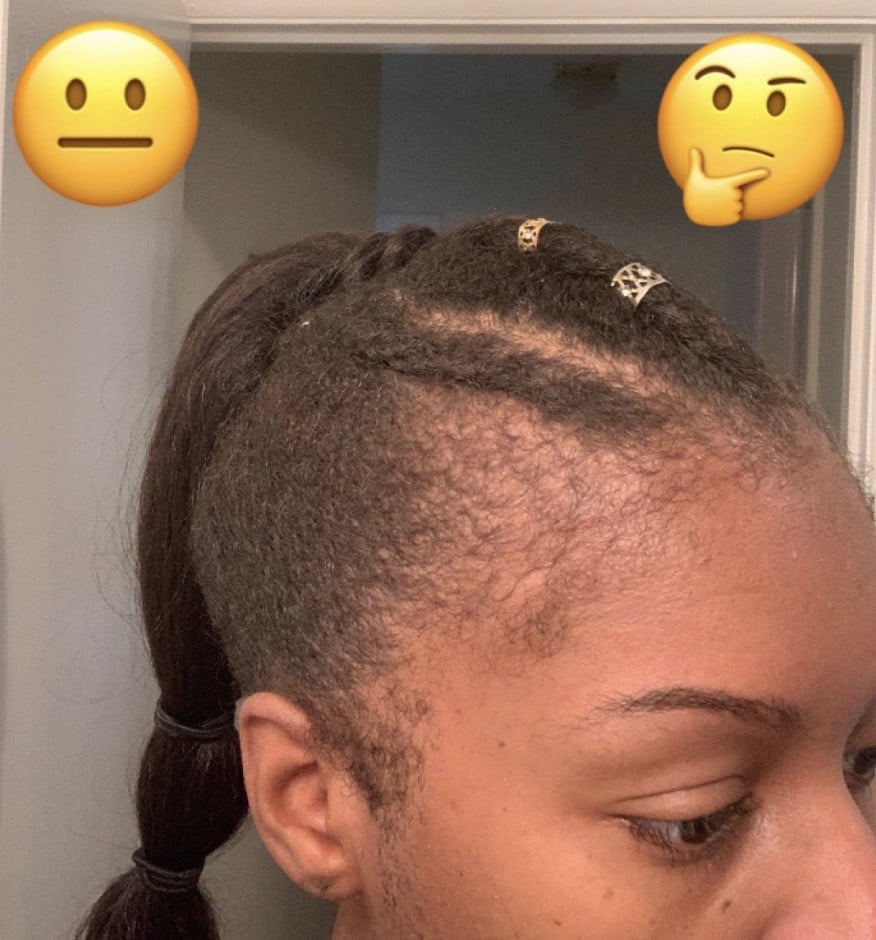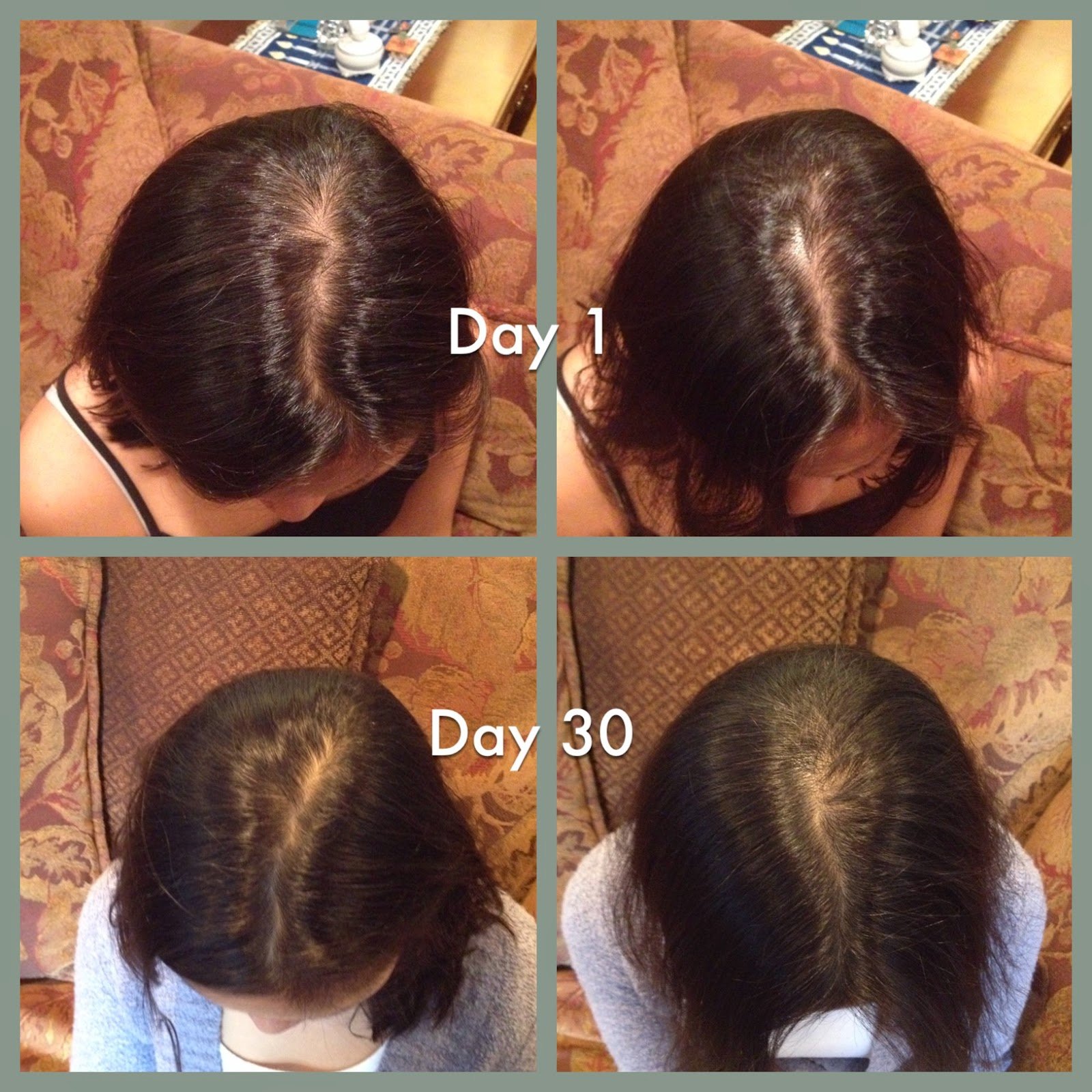Yes Women Experience Thinning Hair Too Heres Why And Possible Treatments
At first, I blamed the hairstylists. For several years, my hair had been flat, the cowlick too pronounced, the texture different. I kept switching salons in search of the perfect cut, the miracle product or, ideally, both. Then, as I ticked off my complaints to a new stylist, he ran his fingers through my hair and shrugged. It happens, he said. We get older. The hair thins.
What?
Just a few months later, Ricki Lake, 51, revealed her own struggle with hair loss an irony for the actress who found fame as the star of Hairspray. My fixation kicked into high gear, and I started searching online for answers. I learned that its normal to shed 50 to 100 hairs a day, and that new ones should grow in their place. But a variety of factors, including genetics, illness and poor nutrition, can disrupt that growth cycle, not just in men, but also in women of all ages. The American Hair Loss Association reports that 40 percent of all hair loss sufferers are women.
Genetics is the leading cause of hair loss for both sexes, said Marc Avram, a New York dermatologist who specializes in the condition. The American Academy of Dermatology reports that 30 million women in the United States suffer from hereditary hair loss, compared with 50 million men, though Avram suspects the numbers are much higher.
What Causes Hair Loss
There are many different types of hair loss with a variety of potential underlying causes. Several medical conditions are associated with hair loss in women. Common causes include thyroid problems and hormone imbalances. Wondering how to stop hair loss in women? When the underlying cause of hair loss is diagnosed and treated, hair loss may stop, and hair may grow back. Stress, nutritional factors, and genetics may also play a role in hair loss. Severe physical stress such as going through childbirth, surgery, or suffering a serious illness may precipitate a type of hair loss called telogen effluvium. This is a condition in which stress forces large numbers of follicles to enter the resting phase, and after a few months, hair will fall out.
Sometimes doctors are not able to determine what is causing hair loss. Other potential causes of hair loss include radiation therapy, cancer, kidney failure, liver failure, medication side effects, and autoimmune disease. If you are experiencing new or increasing hair loss, see your doctor for a diagnosis and treatment.
Different Types Of Hair Loss
There are lots of different types of hair loss. It can take the form of “thinning” or involve a total loss of hair. It can be gradual or sudden it can affect the old and the young.
Hair loss can be genetic, or as a result of extreme stress, a medical condition or treatment.
Hair loss is a well-known side effect of chemotherapy. It’s also common for women to lose more hair than usual up to 3 months after they’ve given birth.
You May Like: Does The Keto Diet Cause Hair Loss
Menopause And Hormone Imbalances
Women may experience hair loss during menopause due to reduced production of the hormones estrogen and progesterone. These changes also lead to symptoms like menstrual cycle irregularity, dry skin, night sweats, weight gain, and vaginal dryness. This added stress on the body may also worsen hair loss.
Some women may even notice thinning and loss after going off hormonal birth control pills. Why? Again, hormonal changes of any kind, particularly falling estrogen levels, can temporarily disrupt the hair lifecycle.
Is It Normal To Lose Your Hair In Your 20s

Um, hi, yes, its absolutely normal to experience hair loss or thinning in your 20sespecially when you think about all the factors that cause it in the first place. Hair lives in a four-step cycle, not just one. It grows, it rests, it falls, and then it regenerates. And because there are are a number of different genes involved in this cycle, its super easy to upset the process, says Burg. Lucky you. Still, even though there are a ton of reasons someone may be experiencing hair loss, these are the most common:
You May Like: How Can I Make Thin Hair Thicker
What Are The Roots Of Hair Loss
Thereâs no single cause. Triggers range from medical conditions as many as 30 to stress and lifestyle factors, like what you eat. Your genes play a role, too. Sometimes doctors canât find a specific reason. As a starting point, hair loss experts suggest you get tested for thyroid problems and hormone imbalances. Hair often grows back once the cause is addressed.
Dont Miss: Does Gazyva Cause Hair Loss
What Questions Should I Ask My Healthcare Provider
- What is the cause of my hair loss?
- How many strands of hair am I losing per day?
- What type of hair loss do I have?
- Will my hair loss be permanent?
- Whats the best treatment for me?
A note from Cleveland Clinic
Hair loss may cause you distress whether it happens because of genetics, a disease, or even stress. Know that there are some treatments you can try, and expert dermatologists are there to help you. Your hair loss may be able to be reversed. See your healthcare provider as soon as you notice something wrong because the sooner you start treatment, the better.
Don’t Miss: Does Type 2 Diabetes Cause Hair Loss
Sudden But Temporary Changes
The second most common cause of hair loss is called telogen effluvium . Its temporary and happens when theres a change in the number of follicles that grow hair and are in a resting state.
For example, women may lose hair in the months after childbirth or another stressful event. You can sometimes identify TE hair loss by looking at the strand. Telogen hairs have a bulb of keratin at the root.
TE is generally caused by anything that may shock the body and disrupt the hair lifecycle. There may be a considerable delay up to three months before you notice the effects of the change.
Possible triggers of TE hair loss:
- emotional stress
- crash diets, lack of protein, eating disorders, and so on
Taking certain medications, like retinoids, beta blockers, calcium channel blockers, antidepressants, and nonsteroidal anti-inflammatory drugs may also lead to TE. The good news is that this type of hair loss is typically reversible, and eventually the TE hairs will start growing again on the scalp.
How Much Vitamin D Should I Take For Hair Loss
According to Levitan, getting between 800 and 2,000 IUor 20 to 50 microgramsof vitamin D daily is usually enough, and too much can cause toxicity. Some people require 5,000 IU daily to maintain optimum blood levels and Vitamin D should be taken in the morning with Magnesium for maximum bioavailability.
Don’t Miss: Does Voltaren Cause Hair Loss
Where Do I Start
You just learned a lot of information about what could be causing your unexplained hair lossso where the heck does a gal start?
My inclination is always to start with the low-hanging fruit, trust your intuition and go from there.
For example, if you know youre stressed out most of the time it would be a good idea to start practicing some regular self-care.
Or, perhaps your hair loss coupled with low energy, insomnia, weight gain, digestive issues, etc. could be a clue that you need to get some lab work done to check for thyroid, hormonal, or nutrient imbalances.
The point is that thinning hair is usually a sign of a deeper issueand thats not something to be afraid of! Instead, Id invite you to see it as an opportunity to take back control of your whole health and enhance your happiness.
Youre worth it!
Facts & Figures On Hair Loss
You may feel alone if you are experiencing hair loss, but after looking at statistics, we hope youll see that almost everyone is affected by some type of hair loss in their lifetime.
For women, thinning hair and hair loss affects roughly one in four women, and 95% of those affected suffer from androgenetic alopecia. On average, women dealing with hair loss are between 25 and 35 years old.
This is a big contrast from the perception that thinning hair and hair loss is only related to older men and women.
Furthermore, 24% of women equate losing hair to losing a limb. This is how deeply emotional thinning hair and hair loss can be, especially for women.
By the age of 35, 66% of American men will experience some type of hair loss, and by the age of 50, about 85% of men will have significantly thinning hair.
For men with male pattern baldness, 25% will begin to see thinning hair or hair loss before they reach the age of 21.
These numbers prove that hair loss is not just an issue for older men and women, but in fact affects many men and women in their early twenties and thirties as well.
There may be a silver lining to thinning hair and hair loss at a younger age though your body may be more receptive to hair growth products and hair loss cures because hair follicles may still be capable of regrowth at this earlier age.
Next well take a look at the different causes for hair loss, and why they might be happening at a younger age
Also Check: Does Dupixent Cause Hair Loss
Are There Complications/side Effects Of Treatment
Minoxidil may irritate your scalp and cause dryness, scaling, itching and/or redness. See your dermatologist if this happens.
With Minoxidil you might also see hair growing in other places other than your scalp . Wash your face after you apply Minoxidil and make sure you avoid other areas when you apply it.
How Is Hair Loss In Women Treated What Medicines Or Supplements May Help

Treatment depends on the cause of your hair loss.
- In cases where the loss is due to stress or hormone changes like pregnancy, there might be no treatment needed. The hair loss will stop after a period of time.
- In cases of hair loss being due to hair styling practices, like tight braids or ponytails or certain chemicals, treatment means not doing the things that caused the damage.
- In cases due to nutritional deficiencies, you might be told to take supplements. For instance, you might be told to take a multivitamin and three to five milligrams of biotin daily.
- Minoxidil is approved for treating FPHL. The 2% or 5% solution can be purchased in stores. However, you have to follow directions exactly and use the product indefinitely. Dont use this product if youre pregnant, if you plan to get pregnant, or if youre breastfeeding.
- The HairMax Lasercomb® low light laser is approved by the US FDA to treat FPHL. Another FDA-approved laser product is the Theradome LH80 PRO® helmet and low light laser helmets and caps.
Other medications that have been studied, but not approved, for hair loss in women include:
- Spironolactone and other anti-androgens.
- Other light treatments.
It is important to note that premenopausal women should not take medications for hair loss treatment without using contraception. Many drugs, including minoxidil and finasteride, are not safe for pregnant women or women who want to get pregnant.
Don’t Miss: What Is The Best Home Remedy For Thinning Hair
How Does Hair Grow
Hair grows from small pores in the skin on your scalp called follicles. Your hair is continuously growing and shedding. This cycle of hair growth has three phases that repeat throughout your lifetime:
- Anagen phase is the phase of active hair growth. It can last between two and six years. Most of your hair is in this phase at any given time.
- Catagen phase is a short, transitional phase where the hair follicles shrink.
- Telogen phase is a resting phase that lasts about three months. After, the follicle releases the hair and the hair falls out.
Another name for postpartum hair loss is telogen effluvium.
Can My Hair Loss Affect My Baby
Postpartum hair loss is a normal part of pregnancy and childbirth and wont affect your baby.
But hair that falls out can wrap around your babys fingers, toes or other body parts. This rare occurrence is called a hair tourniquet and can cause pain and cut off blood supply. If you notice this, youll need to unwind the hair, cut it carefully or call your babys provider.
Recommended Reading: Does Hair Loss From Chemo Grow Back
What Side Effects May I Notice From Receiving This Medicine
Side effects that you should report to your doctor or health care professional as soon as possible:
- chest pain or palpitations
- skin rash, blisters, or itching
- sudden weight gain
- swelling of the hands or feet
Side effects that usually do not require medical attention :
- redness, irritation and itching at the site of application
- unusual hair growth, on the face, arm, and back
This list may not describe all possible side effects. Call your doctor for medical advice about side effects. You may report side effects to FDA at 1-800-FDA-1088.
How Do I Tell If My Hair Is Shedding Or Thinning
Its the question I ask myself most mornings: How exactly do you figure out if your hair is actually thinning or if youre just shedding a little more than usual? You lose about 50 to 100 hairs every day, which is about 0.001 percent of your hair, says Burg. Now, when you notice that amount doubling or tripling, thats an indication that your hair cycle is too short. Reminder: If your hair cycle speeds up, it goes through its resting and falling stages too quickly, which can lead to less hair on your pretty little head.
Other than monitoring the amount of hair you lose in the shower or on your hair brush, youll want to check your ponytail , your part , and your scalp . If you are noticing any of the above, dont freak, heres what you can do next:
Recommended Reading: How To Get Thinning Hair Thick Again
Female Hair Loss : Why It Happens And How To Treat It
Medically reviewed by Kristin Hall, FNP
Noticed your hair falling out? Whether youve spotted more hairs than normal on your pillow, in the shower drain catch or on your clothing, its easy to panic when you notice your hair thinning at a faster pace than normal.
Female pattern hair loss is the most common type of hair loss women experience.
Hair loss in women can occur for a variety of hair types and reasons. Sometimes, its triggered by changes in your hormone levels and a genetic sensitivity to certain hormones. In other cases, factors such as stress, thyroid issues , weight loss and even environmental factors can all have an effect on your hairline.
As a woman, dealing with hair loss can be difficult. Luckily, its almost always treatable using a range of safe, effective medications. Weve covered these treatment options, as well as the key reasons for female hair loss, below.
What Should I Watch For While Using This Medicine
This medicine must be used on a regular basis for your hair to regrow. It may take 2 to 4 months of regular use before you notice any improvement. It is important to continue to use this product to maintain regrowth of hair. Once you stop using it, the regrown hair will usually fall out within 3 months. If you do not see any new hair growth after 4 months, stop using this product and contact your doctor or health care professional.
Do not get this medicine in your eyes, nose, mouth, or on other sensitive areas. If you do, rinse off with plenty of cool tap water. Always wash your hands after use. Do not apply if your scalp is cut, scraped, or sunburned.
Some people may notice changes in hair color or texture after using this medicine.
Recommended Reading: Does Emgality Cause Hair Loss
How Can Hair Loss In Women Be Prevented
Preventing hair loss is not possible when it is due to disease, aging, heredity or physical stressors like injuries. You can prevent hair loss caused by caustic chemicals or tight hairstyles by avoiding them. You might be able to prevent some hair loss by eating a healthy diet that provides necessary nutrients in terms of vitamins, minerals and protein. You can stop smoking.
Treatment For Hair Loss Is Out There

Most cases of increased shedding will gradually resolve on their own without treatment, Dr. Schlosser says. But if your hair doesnt return to its normal fullness within nine months, see a doctor for an evaluation to find out whether something else is going on. And if you have other worrying symptoms, like itching, pain, burning, flaking, or redness, you should seek help sooner.
See your primary care provider or go directly to a dermatologist who specializes in treating hair loss. They can determine what type it is and what the right treatment approach is for you based on which therapies are currently available for your specific issue.
In addition to changes in products and hairstyling habits, your doctor may prescribe topical treatments to treat hair loss, like minoxidil, or direct you to an over-the-counter version, like Rogaine . They might also recommend treatments like platelet-rich plasma injections , which can be helpful for some patients, SELF explained previously. If youre curious about your options, check in with your doctor or dermatologist.
All products featured on SELF are independently selected by our editors. If you buy something through our retail links, we may earn an affiliate commission.
Related:
Also Check: What Causes Female Thinning Hair